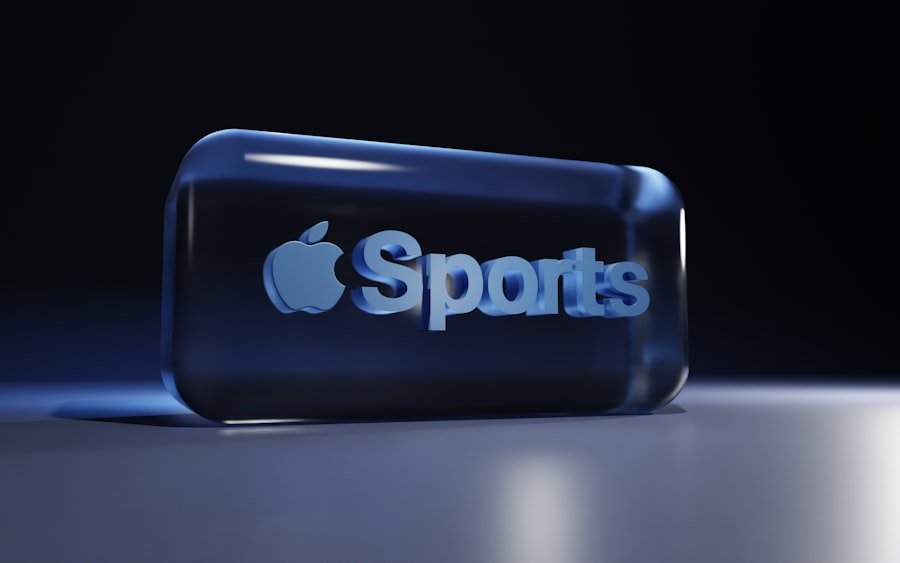Sport brand marketing has evolved into a multifaceted discipline that significantly influences consumer behavior and brand perception. The emotional connection that fans have with their favorite sports teams and athletes creates a unique landscape for brands to engage with their target audience. This connection is not merely transactional; it is deeply rooted in loyalty, passion, and community.
Brands that successfully tap into this emotional reservoir can foster a sense of belonging among consumers, which can lead to increased brand loyalty and advocacy. For instance, Nike’s “Just Do It” campaign resonates with athletes and non-athletes alike, encouraging individuals to push their limits while associating the brand with empowerment and achievement. Moreover, the global reach of sports transcends geographical boundaries, making it an ideal platform for brands to connect with diverse audiences.
Major sporting events like the FIFA World Cup or the Olympics attract millions of viewers worldwide, providing brands with unparalleled exposure. The ability to leverage these events allows companies to craft narratives that resonate on a global scale, enhancing brand visibility and recognition. For example, Coca-Cola has consistently utilized major sporting events to reinforce its brand message of happiness and togetherness, creating memorable campaigns that resonate with fans across different cultures.
Key Takeaways
- Sport brand marketing significantly influences consumer perception and loyalty.
- Athlete endorsements enhance brand exposure and credibility.
- Sponsorships and sports events boost brand visibility to targeted audiences.
- Engaging, shareable content drives fan interaction and brand engagement.
- Measuring campaign success is crucial for optimizing sport brand marketing strategies.
Leveraging Athlete Endorsements for Brand Exposure
Athlete endorsements have become a cornerstone of sport brand marketing, offering companies a powerful avenue for enhancing brand visibility and credibility. When a well-known athlete endorses a product, it not only elevates the brand’s profile but also lends authenticity to its messaging. Consumers often perceive endorsements as a form of social proof; if a trusted athlete uses a product, they are more likely to consider it credible and worth purchasing.
For instance, Michael Jordan’s partnership with Nike revolutionized the sneaker industry, leading to the creation of the Air Jordan line, which remains one of the most successful athletic shoe lines in history. The effectiveness of athlete endorsements lies in their ability to create relatable narratives that resonate with fans. Brands can leverage an athlete’s personal story, achievements, and values to forge a deeper connection with consumers.
For example, Serena Williams’ collaboration with Wilson Sporting Goods not only highlights her prowess as a tennis player but also emphasizes her advocacy for gender equality and empowerment. This alignment between an athlete’s personal brand and the company’s values can create a compelling narrative that drives consumer engagement and loyalty.
Utilizing Sports Events and Sponsorships for Brand Visibility

Sponsorship of sports events is another strategic approach that brands employ to enhance their visibility and connect with audiences. By associating themselves with high-profile events, brands can capitalize on the excitement and engagement that these occasions generate. Sponsorships provide companies with the opportunity to showcase their products in front of large audiences while also aligning themselves with the values and emotions associated with the sport.
For instance, Red Bull’s sponsorship of extreme sports events not only positions the brand as an adventurous lifestyle choice but also allows it to engage with a niche audience that values adrenaline-fueled experiences. Furthermore, the integration of brands into the fabric of sporting events can take various forms, from on-site activations to digital campaigns that extend beyond the event itself. Brands like Budweiser have successfully utilized event sponsorships to create immersive experiences for fans, such as interactive booths or exclusive behind-the-scenes content.
These initiatives not only enhance brand visibility but also foster a sense of community among fans, encouraging them to share their experiences on social media platforms. The synergy between live events and digital engagement amplifies the impact of sponsorships, creating lasting impressions on consumers.
Creating Engaging and Shareable Content for Sports Fans
| Metric | Description | Typical Value / Range | Importance for Engagement |
|---|---|---|---|
| Average Time on Page | Average duration a user spends viewing the content | 3-7 minutes | High – Longer time indicates engaging content |
| Social Shares | Number of times content is shared on social media platforms | 500-10,000+ shares per post | Very High – Shareability increases reach and engagement |
| Click-Through Rate (CTR) | Percentage of users clicking on links within the content | 2-8% | High – Indicates interest and interaction |
| Comments and User Interaction | Number of comments, replies, and discussions generated | 50-500 comments per post | High – Shows active fan engagement |
| Content Format Popularity | Preference for types of content (videos, polls, articles) | Videos (40%), Polls (25%), Articles (35%) | Medium to High – Format affects shareability and engagement |
| Hashtag Usage | Frequency and effectiveness of hashtags in content | 3-5 hashtags per post | Medium – Helps in content discovery and trending |
| Mobile Engagement Rate | Percentage of users engaging via mobile devices | 70-85% | High – Most sports fans access content on mobile |
| Post Frequency | Number of posts published per day/week | 3-5 posts per day | Medium – Consistency keeps fans engaged |
In today’s digital age, content creation plays a pivotal role in sport brand marketing. Engaging and shareable content can significantly enhance a brand’s reach and impact by resonating with sports fans on various platforms. Brands must focus on creating content that not only entertains but also informs and inspires their audience.
This could include behind-the-scenes footage, athlete interviews, or user-generated content that showcases fans’ passion for their favorite teams or sports. For example, Adidas has effectively utilized social media platforms to share compelling stories about athletes’ journeys, fostering a deeper connection between the brand and its audience. Moreover, the rise of video content has transformed how brands engage with sports fans.
Short-form videos on platforms like TikTok or Instagram Reels allow brands to capture attention quickly while delivering impactful messages. The use of humor, creativity, and relatability in these videos can lead to increased shares and engagement among fans. A notable example is the viral success of various challenges or trends that brands initiate during major sporting events, encouraging fans to participate and share their experiences online.
This not only amplifies brand visibility but also cultivates a sense of community among fans who share similar interests.
Tapping into the Influence of Sports Social Media
Social media has become an indispensable tool for sport brand marketing, providing brands with direct access to their target audience. Platforms like Twitter, Instagram, and Facebook allow brands to engage with fans in real-time, fostering conversations around their products and campaigns. The immediacy of social media enables brands to respond quickly to trends or events in the sports world, positioning themselves as relevant players in ongoing discussions.
For instance, during major tournaments like the UEFA Champions League, brands often leverage trending hashtags or memes to engage with fans in a lighthearted manner. Additionally, social media offers brands valuable insights into consumer preferences and behaviors through analytics tools. By monitoring engagement metrics such as likes, shares, and comments, brands can tailor their marketing strategies to better align with their audience’s interests.
This data-driven approach allows companies to refine their messaging and content strategies continuously. For example, if a particular type of post garners significant engagement during a sports event, brands can replicate that success by creating similar content in future campaigns.
Collaborating with Sports Influencers for Brand Promotion

The rise of social media influencers has opened new avenues for sport brand marketing through collaborations with sports influencers who have established credibility within specific niches. These influencers often have dedicated followings that trust their opinions and recommendations, making them valuable partners for brands looking to reach targeted audiences. Collaborating with influencers allows brands to tap into their established communities while leveraging their unique storytelling abilities to promote products authentically.
For instance, fitness influencers who specialize in training regimens can effectively promote athletic gear by showcasing how it enhances their performance. Moreover, influencer collaborations can take various forms, from sponsored posts to co-created content that highlights both the influencer’s personality and the brand’s values. This approach fosters authenticity and relatability, as consumers are more likely to engage with content that feels genuine rather than overtly promotional.
A successful example is Puma’s partnership with various athletes and fitness influencers who share workout routines featuring Puma apparel, creating a seamless blend of lifestyle content and product promotion that resonates with fitness enthusiasts.
Implementing Innovative Brand Activation Strategies in Sports
Brand activation strategies in sports marketing are essential for creating memorable experiences that resonate with consumers beyond traditional advertising methods. Innovative activations can take many forms, from interactive fan zones at sporting events to immersive digital experiences that engage audiences online. These strategies aim to create lasting impressions by allowing consumers to interact with the brand in meaningful ways.
For instance, Gatorade’s “Gatorade Sports Science Institute” activation at major sporting events provides fans with insights into hydration science through engaging exhibits and interactive displays. Additionally, technology plays a crucial role in enhancing brand activation strategies within sports marketing. Virtual reality (VR) experiences or augmented reality (AR) applications can transport fans into immersive environments where they can engage with the brand on a deeper level.
For example, during the Super Bowl, brands like Pepsi have utilized AR technology to create interactive commercials that allow viewers to experience the excitement of the game from their living rooms. These innovative approaches not only capture attention but also encourage sharing among fans who want to showcase their unique experiences.
Measuring the Success of Sport Brand Marketing Campaigns
Measuring the success of sport brand marketing campaigns is critical for understanding their effectiveness and optimizing future strategies. Brands must establish clear objectives and key performance indicators (KPIs) before launching campaigns to evaluate their impact accurately. Metrics such as brand awareness, engagement rates, sales conversions, and social media reach provide valuable insights into how well a campaign resonates with its target audience.
For instance, if a campaign aims to increase brand awareness during a major sporting event, tracking metrics like impressions and reach can help assess its effectiveness. Furthermore, advanced analytics tools enable brands to gather data on consumer behavior post-campaign launch. By analyzing website traffic patterns or social media interactions following a campaign’s rollout, brands can gain insights into how consumers respond to their messaging.
This data-driven approach allows companies to refine their marketing strategies continuously based on real-time feedback from their audience. For example, if a particular ad resonates well during an event but fails to convert into sales afterward, brands can adjust their messaging or promotional tactics accordingly to enhance future campaigns’ effectiveness. In conclusion, sport brand marketing encompasses various strategies that leverage emotional connections between fans and athletes while utilizing innovative technologies and platforms for engagement.
By understanding these dynamics and implementing effective measurement techniques, brands can navigate this competitive landscape successfully while fostering lasting relationships with consumers.



